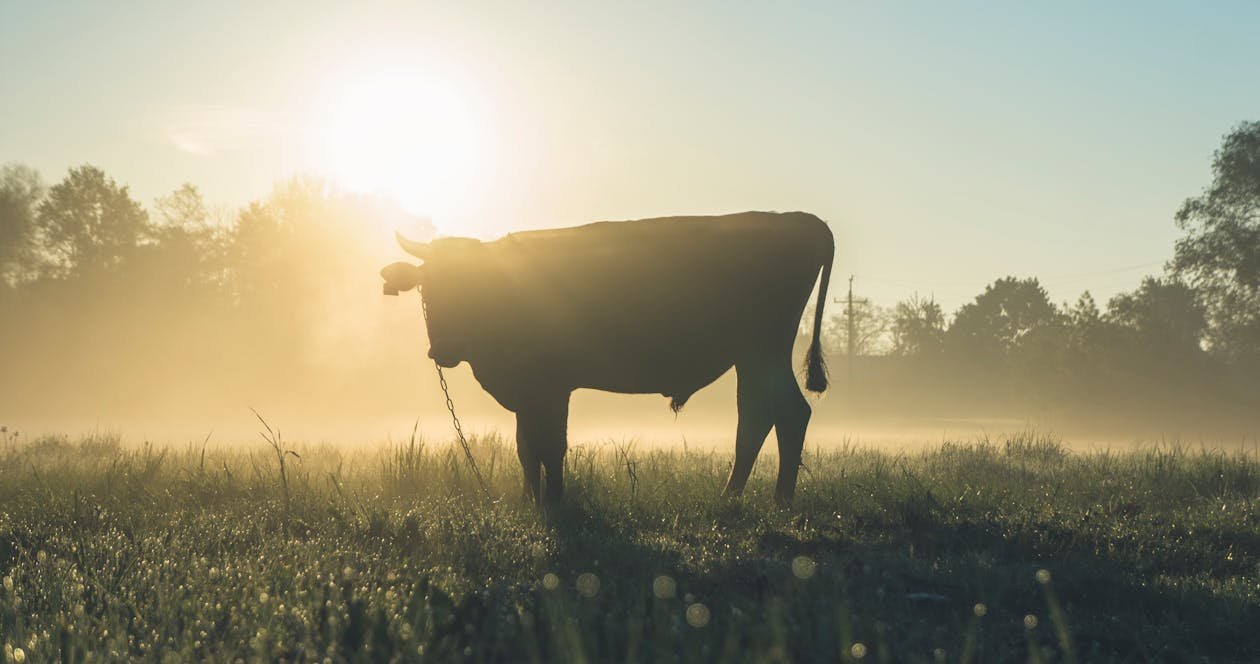Introduction
Artificial insemination (AI) is a key reproductive technology used in dairy and beef farming to enhance genetic quality, increase productivity, and improve herd management. By controlling the breeding process, AI allows farmers to maximize the potential of their livestock, reduce costs, and manage breeding schedules more effectively. This technique is widely used in the cattle industry due to its efficiency and ability to produce high-quality offspring.
In this article, we’ll explore the process of artificial insemination in cows, its benefits, challenges, and best practices.
What is Artificial Insemination?
Artificial insemination is the process of manually introducing semen into a cow’s reproductive tract without the use of natural mating. The semen used in AI can either be fresh or frozen, and it is collected from high-quality bulls. This allows farmers to select specific genetic traits that they wish to pass on to their herd, such as higher milk yield, disease resistance, or better meat quality.
Steps in the Artificial Insemination Process
- Semen Collection and Storage:
- Semen is collected from bulls using an artificial vagina, and the sample is then evaluated for quality. If it meets the necessary standards, the semen is stored in liquid nitrogen at -196°C to maintain its viability.
- Detection of Estrus:
- The success of AI largely depends on proper timing. A cow must be in estrus (heat) for insemination to work effectively. This is the period when the cow is most fertile and receptive to breeding. Estrus lasts for about 12-24 hours, and signs include restlessness, increased vocalization, mounting behavior, and mucus discharge from the vulva.
- Preparation and Handling of Semen:
- Frozen semen is thawed in warm water before insemination. It is crucial to handle the semen carefully to avoid contamination or damage to sperm cells.
- Insemination Procedure:
- A trained technician inserts a special device (AI gun) into the cow’s reproductive tract through the cervix and deposits the semen directly into the uterus. The goal is to maximize the chances of fertilization by ensuring that the sperm is placed close to the eggs.
- Post-Insemination Care:
- After insemination, the cow should be monitored to ensure she is not under stress. It is also important to check if the insemination was successful, usually through pregnancy detection methods like ultrasound or blood tests after 30 days.
Benefits of Artificial Insemination
- Improved Genetics:
- AI enables farmers to access the genetics of superior bulls from anywhere in the world, improving the overall quality of their herd. This is especially useful for increasing milk production in dairy cows or enhancing meat quality in beef cattle.
- Disease Control:
- AI reduces the risk of sexually transmitted diseases (STDs) because it eliminates the need for direct contact between bulls and cows. This leads to healthier herds and lower disease management costs.
- Cost-Effective:
- AI is more economical than maintaining a bull on the farm. Bulls can be expensive to buy, feed, and house. With AI, farmers can use semen from multiple bulls without the additional overhead.
- Precise Breeding:
- AI allows for controlled breeding schedules, making it easier to manage calving intervals and maintain a steady production cycle. Farmers can time insemination to produce offspring at the most suitable times for their business needs.
- Safety:
- Handling bulls can be dangerous due to their size and strength. AI reduces the need to manage bulls, minimizing risks to farm workers.
Challenges of Artificial Insemination
- Requires Skill and Expertise:
- AI is a highly technical procedure that requires a skilled technician. Poor handling of semen, incorrect timing, or improper technique can lead to failure.
- Estrus Detection:
- The success of AI depends on accurate detection of estrus. If estrus is missed or misjudged, insemination may not result in pregnancy, leading to wasted resources.
- Cost of Semen:
- High-quality semen from elite bulls can be expensive, and farmers must weigh this cost against the potential benefits of improved genetics.
- Storage Requirements:
- Semen must be stored at extremely low temperatures in liquid nitrogen tanks. Managing these tanks can be costly and require specialized equipment.
- Success Rates:
- AI has a success rate of around 60-70% in cows, depending on the timing, handling of semen, and health of the cow. While this is high, natural mating can sometimes achieve higher success rates in certain conditions.
Best Practices for Successful AI
- Proper Estrus Detection:
- To improve the chances of successful AI, use aids such as heat detection patches, pedometers, or hormone treatments to monitor estrus more effectively.
- Hire Skilled Technicians:
- Insemination should be performed by trained and certified AI technicians to ensure proper semen placement and increase the likelihood of pregnancy.
- Semen Handling:
- Always follow the correct procedures for thawing and handling semen. This will prevent sperm from being damaged or contaminated, which can affect fertility rates.
- Nutritional Management:
- A cow’s health directly affects fertility. Ensure cows receive a balanced diet rich in essential nutrients like protein, energy, and minerals to improve reproductive performance.
- Monitor for Pregnancy:
- After AI, it’s important to monitor cows for pregnancy using ultrasound or blood tests. This helps in identifying which cows are pregnant and which may need a second round of insemination.
Conclusion
Artificial insemination in cows is a valuable tool in modern farming that offers numerous benefits, from genetic improvement to better herd management. However, it requires expertise, proper timing, and good handling practices to achieve success. When implemented correctly, AI can help farmers boost productivity, enhance the genetic quality of their herds, and reduce costs associated with traditional breeding methods.
Understanding the entire process, including the challenges, allows farmers to make informed decisions that can optimize their breeding strategies and overall farm efficiency.

